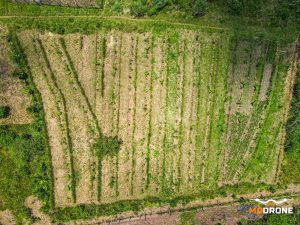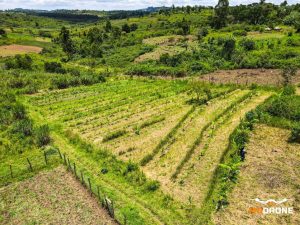Agroforestry is an essential component of Lake Albert Foundation's 'regenerative agriculture strategy'. In 2023, the foundation designed and planted approximately 1 acre of food forest following the principles of successional agroforestry. This includes agricultural practices with a focus on planting trees and shrubs in patterns that mimic and encourage natural succession. This creates a positive interaction between the different plants as well as between plant and soil, resulting in a productive and resilient landscape for people and nature. This food forest serves as a learning, demonstration and training field for community members and other interested parties.
This small forest already contains more than 30 different species, which all fulfil their own essential function in the system, such as producing edible fruits, providing shade, producing biomass for mulch, providing timber products, fixing nitrogen in the soil, etc. Some examples of these species are: Moringa, Erythrina abysinica, avocado, neem, mahogany, coffee, albizia, orange, caliandra and banana.
In 2024, the foundation will support even more interested farmers in planning and planting their own successional food forests. Since agroforestry is not a silver-bullet solution, this will always be combined with introducing other regenerative practices such as composting.
(Pictures by Mark Dieleman, 2023)

Drone shots of the regenerative food forest in Uganda


